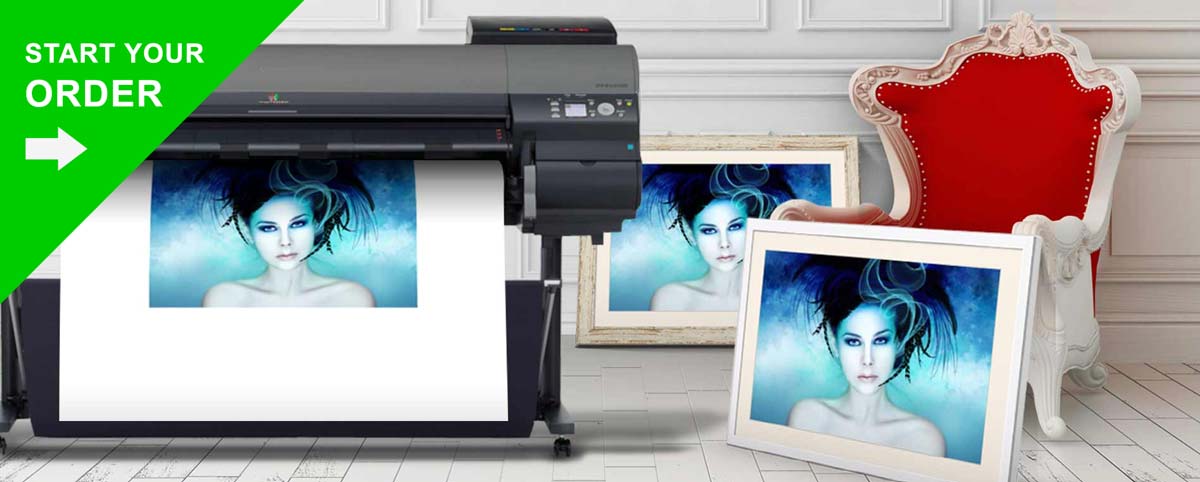
Upload your photograph or artwork as a digital image copy
Select your print options and size
Most prints ship within a few business days
What is a Giclee Print
The word giclee derives from a French phrase “"le gicleur" which means “to squirt” or “to spray”. It was modified and termed giclée, (pronounced as jeeclay) by an American company which was looking for a way to describe the new print making technique they were using in the 1980s. Since the word “inkjet” had an inferior connotation in the fine art community, the word giclee was proposed as a more refined description of prints made in this fashion.
Orgins of Giclee Printing
Originally using IRIS printers, the technology has evolved considerably to include prints made on other brands of printers. These more well-known models provided by companies such as Canon and Epson now dominate this industry since they produce the most accurate prints possible while using fade resistant, archival grade inks on fine art media such as canvas or art papers. Because it does not have the complex and expensive setup process other types of prints require, it quickly become the method of choice for both artists and photographers.
Utilizing Inkjet Printers
These printers used for professional giclee productions are actually similar to inkjet printers found at local office supply stores, just larger and sometimes with a higher-grade ink. The prints are usually printed on rolls of paper or canvas and can be done on demand. Unlike some of the more traditional print making techniques, the setup process is easier and does not require large quantities be ordered at a time. Some artists even choose to print them as needed or after the print is sold. While this may not appeal to some in the art world, many galleries who stock and sell prints will frequently accept giclee prints just as readily as screen and lithograph prints as long as they are made by a third-party company and not the artist themselves. Fine art photographers have also gravitated to giclee prints for their clients simply for the variety of papers and color accuracy.
Name brand companies such as Canon, Epson and HP now provide most printers in the professional giclee industry. They continue to engineer inks to become more archival while allowing for an incredible range of color. Paper manufacturers have also become an influential factor by producing and selling a wide range substrates with varying characteristics. These include canvas, textured and fiber based papers engineered to hold and best absorb the inks being used.
Types of Inks Used
Currently water based pigmented inks are the most widely used types of inks due to their longevity and high color gamut however the prints need to be handled carefully until the inks have had time to cure. Canvas prints are easily coated using water based acrylic clear coats while paper prints typically are not coated or done so expensively with various non waterbased coating agents. Some brands such as Epson have also begun to use more durable solvent inks however these tend to lack the color gamut (accuracy) the pigmented inks have. In the future, it is expected these solvent based inks will improve so they can become more mainstream for fine art printing.
Can You Make Your Own Fine Art Prints at Home?
While some artists are now able to produce giclee prints themselves, many still look to professional print makers like FinerWorks when the prints are to be sold. Printing with FinerWorks simply saves the artist both the hassle and cost of trying to do it themselves, plus elevates the print from being considered a “homemade reproduction” to a professionally made giclee print.
FAQs